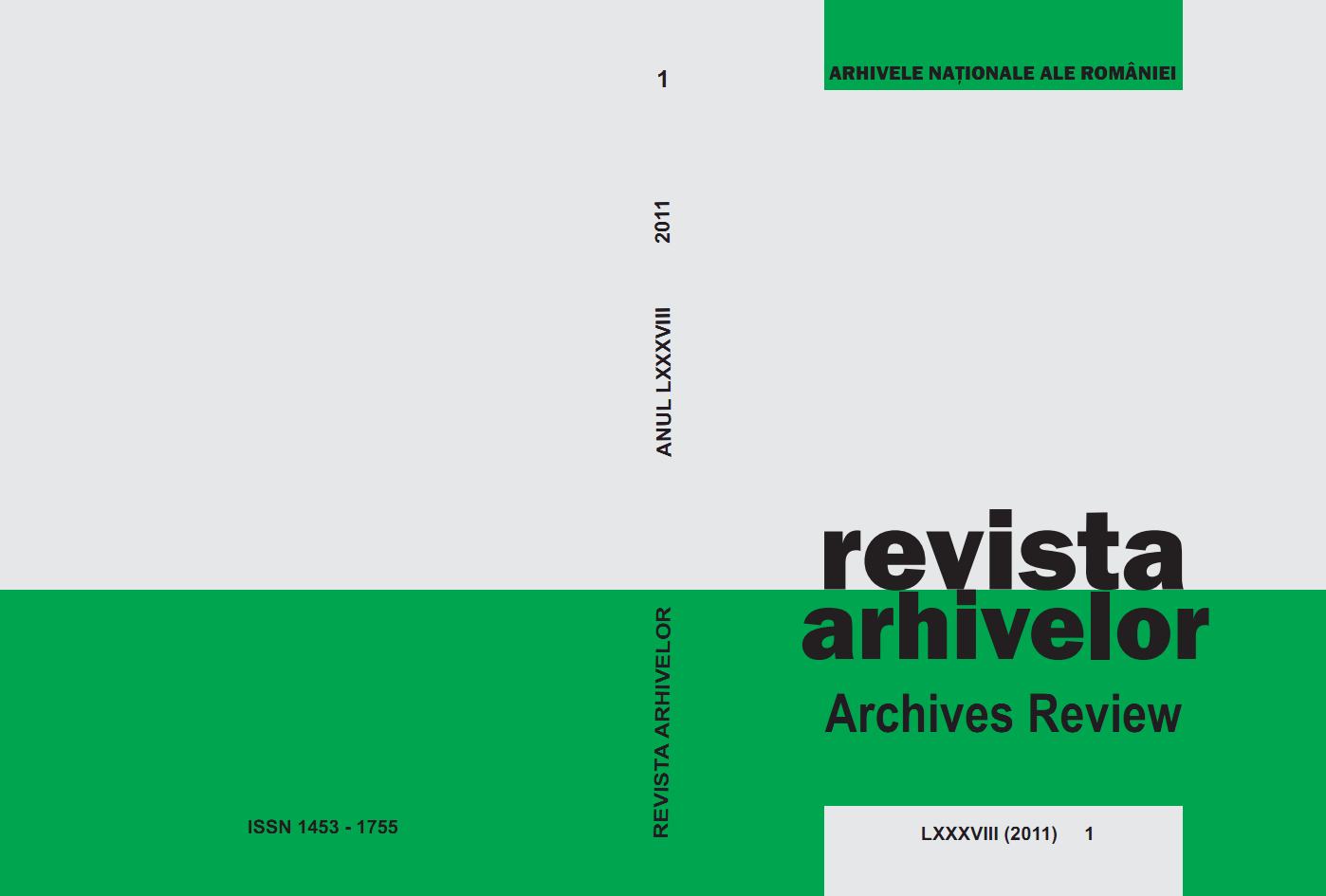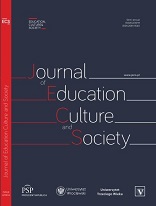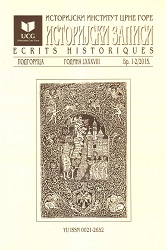
We kindly inform you that, as long as the subject affiliation of our 300.000+ articles is in progress, you might get unsufficient or no results on your third level or second level search. In this case, please broaden your search criteria.


Starting from several foreign films that were banned or censored on grounds of obscenity in Romania during the 1960s and the 1970s, this study intends to capture the spirit of totalitarian communist censorship. Undermining the classical dissociation, this censorship placed a ban on erotic art, refusing to differentiate it from pornography. Under charges of obscenity or vulgarity, various films or scenes were prohibited, including some that were ostensibly innocuous and not indictable for this offense. This ideologically sanctioned prudery, voiced from a position that was as conservative as that of (petty) bourgeois primness, may seem paradoxical if we consider that communists used a progressive, revolutionary rhetoric at the political level. In fact, pornography was a metonymic term that designated the generalized degeneration communists associated with the opposing capitalist system. This study contributes to reflections on a contemporary issue situated at the confluence of moral philosophy, criminal legal practice and art theory: the (in) compatibility of art with pornography. Is there a contradiction in terms or, quite on the contrary, can pornography aspire to an artistic status? If the latter is the case, does pornography remain pornographic or can it be elevated to the rank of eroticism (and, hence, to the rank of art), once it has been divested of its aesthetically degrading dimension? Or, more radically still, can pornography become an art while maintaining its pornographic appeal?
More...
The presentation I am submitting to your attention focuses on how the University of Bucharest operated during the 1980’s, a very difficult period for Romania. As to be expected, the University of Bucharest, like the en-tire Romanian education system, took the full blow of communist exper-imental policies, reflecting quite accurately the general developments of the political system in Romania in the 1980s. The structure of Bucharest University, the curriculum, acceptance of the students via admission ex-ams as well as the process of assignment of graduates from University of Bucharest to production units in the 1980’s, are aspects of university life which were all affected by profound changes during the period subject to the research, leading to a genuine phenomenon in the Romanian society. The way these changes were reflected in the cultural mindset and the traumas generated by them are all points of interest addressed in my presentation.
More...


Considering the upheavals in Eastern Europe the Yugoslav Space, once again, represents a "special case". Yugoslavia had been, for the quarter of a century, more open to the world than any other state in the sphere of the Soviet Union. Hence, it was in a stronger way exposed to the consequent challenges of democracy, cultural Freedom and market economy. Yugoslavia, therefore, seemed to be better prepared psychologically for the fundamental changes in society – yet, it has experienced, over the last twelve months, a terrible agony, it is rushing almost into a disaster in which everyone tries in vain to save himself.
More...
The issue of “family reunification” of ethnic Germans in Romania with relatives in the Federal Republic of Germany has been discussed in several books and journals in the recent years. In these publications, negotiations to reach the closed-door meetings from 1968 were exposed, wherein the Federal Republic of Germany paid in increasing sum of money for the expatriation of ethnic Germans from Romania. This article shows the way the issue was addressed during Nicolae Ceauşescu’s meetings with important leaders of the Federal Republic of Germany, during their official visits to Romania, based on existing documents from the archives of the Romanian Communist Party’s Central Committee, External Relations Commission. Ceauşescu denied the existence of any problem in the “reunification of families” but agreed to resolve “humanitarian issues”; German politicians were aware that they couldn’t have argued against it, knowing that he had anticipated an accumulation of sum for every ethnic German emigrating from Romania.
More...
The paper addresses the way in witch Dostoevsky's works have been published and interpreted in Romania during the communist regime, particularly in the period 1945-1970. Using content analysis and comparative analysis, the attempt is to identify the main constitutive elements of the Marxist-Leninist paradigm through witch the texts of the Russian writer were approached by the literary Romanian critics and to investigate the influence of the Soviet literary critics. In the early years of the communist regime, Dostoevsky's novels were often accompanied by exegetical texts of the Soviet critics and the premise is that the Romanian critics used similar elements in their approach.
More...
This study aims at reconstituting the way in which a bright journalist and man of culture, Nicolae Carandino, entered and remained in the attention of the political police for over forty years, practically until the fall of communism in Romania. The used data were collected from the documents included in the surveillance files concerning Carandino along the years, as well as from memoirs. We have depicted the main moments of his “evolution” as victim of the regime, from 1945-1947, we have followed Carandino’s destiny along his imprisonment years and, especially, during the eight years of home arrest, hybrid form of detention, in which the bars that separate the victim from the free world are no longer visible. In the end, we have crayoned the life of this distinguished man of culture during his “blank” arrest, as he called his existence after his release from house arrest, emphasising his strength in resisting to all the pressures exercised over him along the time.
More...
The entire economic policy practiced by the Romanian Workers’ Party / Romanian Communist Party between 1948 and 1989 is treated with indifference at present, historians relegating this topic to a secondary plane. In spite of this, the economic strategies, their application and results must be known in order to understand the entire social, cultural and material complexity of Communism. Our study approaches one of the aspects of this issue, precisely the financial policies practised by the leaders of Romania during Communism. The impact of these policies is massive, both on the internal social environment and on the foreign relations of Romania, with the western world especially.
More...
The Ukrainian historiography pays special attention to the inter-ethnical relations during the National Ukrainian Revolution of 1917 - 1921, as the falling of tsarism freed the expression possibilities of the populations living in the Russian Empire, they having, thus, the opportunity to declare the necessity of protecting their own cultural interests and, in some cases, of creating national states. The analysis of the national/ethnic processes during the revolution started in 1917 has not covered yet the entire range of problems. There is still much to be said about the regional disputes or cooperation between various ethnic groups. This fact is proven by the series of publications of the Ukrainian historian V. Ustymenko who examines the ethnic and political processes in the Popular Ukrainian Republic from the point of view of the officials from Kiew, leaving the research of the regional aspects of this issue still open for discussion. The present article analyses the social and political conditions under which the Ukrainian and Moldavian national associations from Odessa developed during the 1917 revolution, highlighting the cooperation between them under various aspects regarding the public attitudes (joint demonstrations, looking for solutions to the mutual problems in the political and cultural areas, forming national military units). The leaders of the Ukrainian Military Rada from Odessa (OUMR), especially I. Luțenko, considered the creation of the Ukrainian military units as a necessary element for the formation of the future Ukrainian state. The Moldavian Military Committee pursued similar goals, proving a trust worthy partner for OUMR in reaching their goals. The Moldavian and Ukrainian military organizations had to face the opposition of the Odessa Military District, of Rumcherod (Central Executive Committee of the Soviets of Romanian Front, Black Sea Fleet and Odessa Oblast), of the Council of the Representatives of Officers and Soldiers, as well as of the Russian parties which dominated the political life in the region. Eventually, significant ethnic military units were successfully created in the Odessa region (12,000 Ukrainian militaries and 3000 Moldavians). They cooperated initially with the Ukrainian Steering Committee (UKC), founded in March 1917, which wanted to contribute to the creation of an autonomous national government lead by Tsentralna Rada (the Central Rada). The Odessa Moldavian Military Committee cooperated initially with the representative Ukrainian bodies, but soon shifted towards reaching their own national goals in Bessarabia.
More...
The importance of women’s participation in the Forced Armies is a subject that asks for a special attention on Albanian historical studies whether during the internal develop-ment of communist regime, also during their inclusion in the international bodies after the 90s. During the communist regime even though women had the opportunity to practice this profession they weren’t taken as a study case but simply as part of the propaganda done in aid to woman’s emancipation. In the next 20 years with time pass-ing new changes were made so the role and the importance of the woman in the Forced Armies as an active soldier, faced some fundamentally changes due to the transformations the army went through when joining the NATO. This kind of evolution is the subject of this paper, explaining woman’s journey in the army, starting with facts showing women’s first inclusion in the Forced Arms to end up as representatives at NATO. Documents taken from AQFA put light on the reasons why it became important to include women into the army during the end of the 60s, the difficulties that the first military women went through, how their career got on and what changes were made during the initiatives for gender equality based on the resolute 1325 of the United Na-tions after 2000s.
More...
The aim of this article is to present the result of research using methods of oral history to find out the attitudes and work of Czech journalists working in the 70s and 80s of the 20th century in the regional (provincial and district) media controlled by the Communist Party. The interviews were conducted with a total of 13 journalists from 7 editorial departments (newsrooms) from different cities within the Czech Socialist Republic. The experimental part of the paper is divided into five chapters in relation to the main research questions: self-censorship; retrospective work evaluation and the role of (regional) Communist press; relationship with the Communist Party, the influence of political actors to topics selection; preferred vs. banned topics; and the last part, including specific cases, due to which journalists were in trouble, mostly on the basis of published material, which was in conflict with Communist Party politics.
More...
Romania lags behind other Central and Eastern European countries in dealing with the communist dictatorship. The political continuity after 1989 prevented any negotiation of the past, leading to a „bottom-up“ understanding based on myths and fictionalized narratives, which often increased conflicts between the civil society and the political elites. These aspects are still considered to be a flaw in terms of political culture. This paper argues about the emergence of different types of media and institutions of collective memory – with focus on the National Council for the Study of the Securitate Archives (CNSAS) - about the way they challenge the negotiation of the communist past, their reception by the public as well as about their influence on political discourses.
More...
In Ceaușescu’s Romania, territorial systematization was used as a gigantic political, economic and social tool in order to create the ‘multilaterally developed socialist society’. The regime seemed to be homogenous and function in a unilateral ideological way. However, the national-communist edifice was full of contradictions. The most important of them that between party and state, reverberated at all levels of activity and systematization surely represented one of the most important fields in which party-state contradictions could expand. They did so, as I try to argue in the present article, in favor of the state rather than the party, although the party used the state as an administrative instrument in order to achieve its developmental goals.
More...
This paper shows the transition of the Yugoslav economic system towards a planned economy during 1946. The restoration of the economy and the establishment of a new economic order, occupied the primary position among the complex issues whose solutions awaited the new people in power in Yugoslavia after the liberation of the country. After the takeover, the Yugoslav communists, did not have thought-out plans for the transformation of the economic system, but they adopted the Soviet model and implemented the practice that was used in the USSR for the reconstruction of the economy. Sovietization of the Yugoslav economy marked a radical break from the pre-war economic practice, while the state sector of the economy was supposed to, through planning, become a decisive force behind economic development.
More...
Mit der Entstehung zweier deutscher Staaten im Jahre 1949 verschärften sich die nachkriegszeitlichen Auseinandersetzungen. Der Bruderkrieg entfaltete in den darauffolgenden zwei Jahrzehnten eine gesteigerte Intensität und überzog einen ungeheuren Raum, beinahe die ganze Welt. Sowohl die Bundesrepublik Deutschland als auch die DDR verwendeten gewaltige Ressourcen und Energien, die sich in der gegenseitigen Durchkreuzung auf diplomatischer Ebene zuspitzten. So verfolgten beide Staaten jede Initiative des jeweils anderen mit maximaler Aufmerksamkeit und versuchten jede Gegenbewegung zu neutralisieren.
More...
Through analysis of archive documents and published sources, as well as press and relevant literature, an attempt has been made to present the position of Montenegro in the revolutionary perspective of Communist Party of Yugoslavia. The aforementioned problem is examined in the period between the introduction of the personal regime of king Aleksandar Karađorđević and the beginning of the World War II in the Kingdom of Yugoslavia. The first section of the work deals with the relations of communists towards the Montenegrin national issue, while the second section is about the Party’s territorial and organizational policy in the area of banovina Zeta.
More...

In the article, the late Soviet Lithuanian painting is analysed not as a product of a historical epoch, but is interpreted in the anachronistic contexts of the modern Western painting and contemporary art history. In 1960s, when both the Soviet authorities and the artists sought to renew the official art, especially the so-called thematic painting, Lithuanian painters started to experiment with image subjects and structure. The most interesting among these “iconological” experiments probably are paintings about the painting itself, its origins and destiny. Artists of the Soviet period experimented with painting’s medial characteristics, conditions of visual world representation and optical perception, boundaries of mimetic painting, using means that were invented in the Western painting quite a long time ago. These tested experiments bring different results every time, because every important role is attributed to the concrete “historical” observer. Two directions of such classical experiments are discussed in the article: visualized explorations of space perception or the interaction between real and imaginary spaces and visual quotations. Lithuanian painters actualized the traditional window and mirror motifs by choosing a car (or a bus) as a model for exploring the structure and economy of imaginary picture space; it became a political metaphor as well: a crowded bus represented the state of society that was suffocating under the “Iron Curtain”. The curtain motif necessarily forced the spectators of that time to reflect on the lack of freedom and visual quotations – on the accessibility of information. Such painting raised active spectators, invoked their optical and political consciousness.
More...